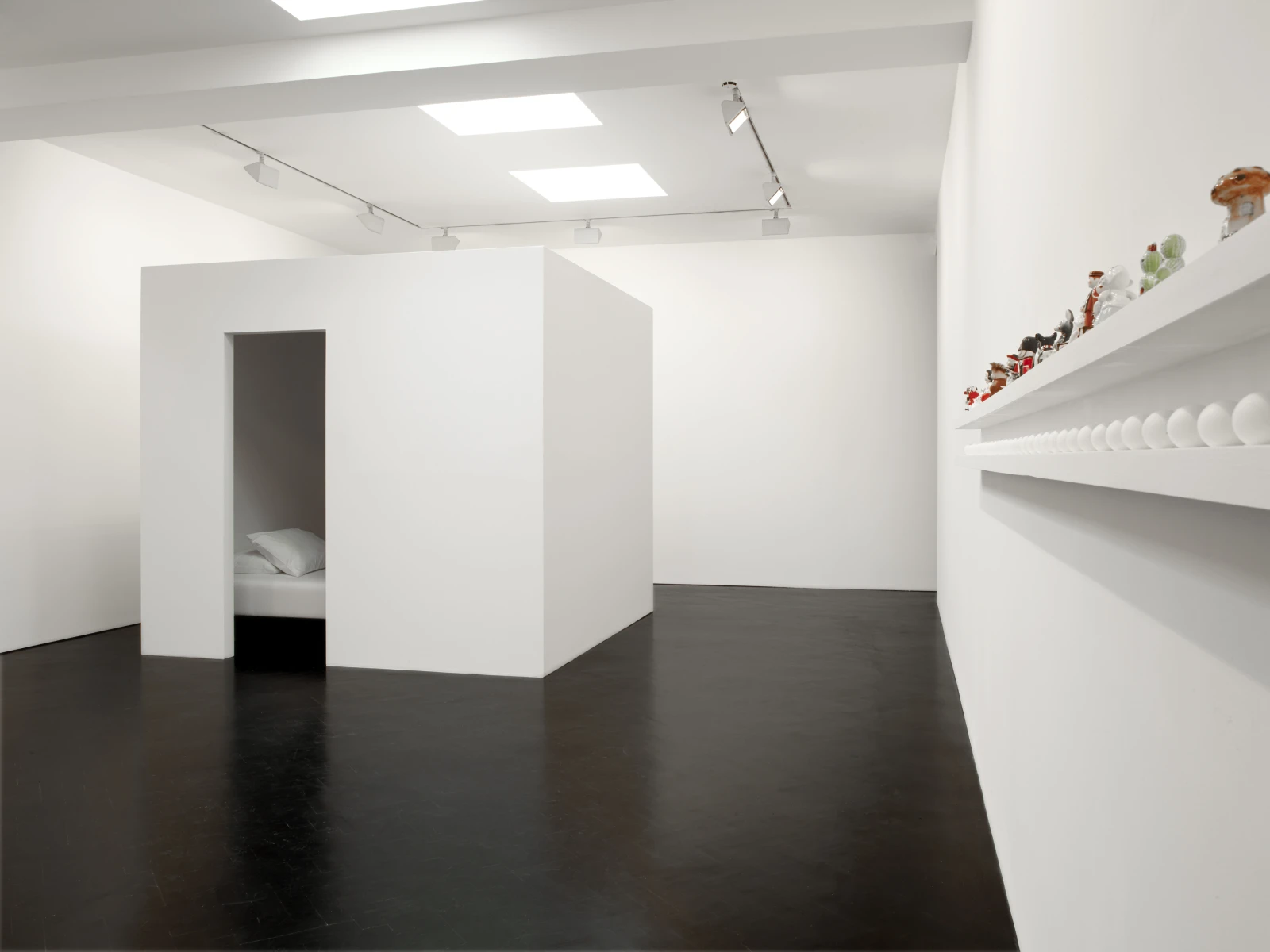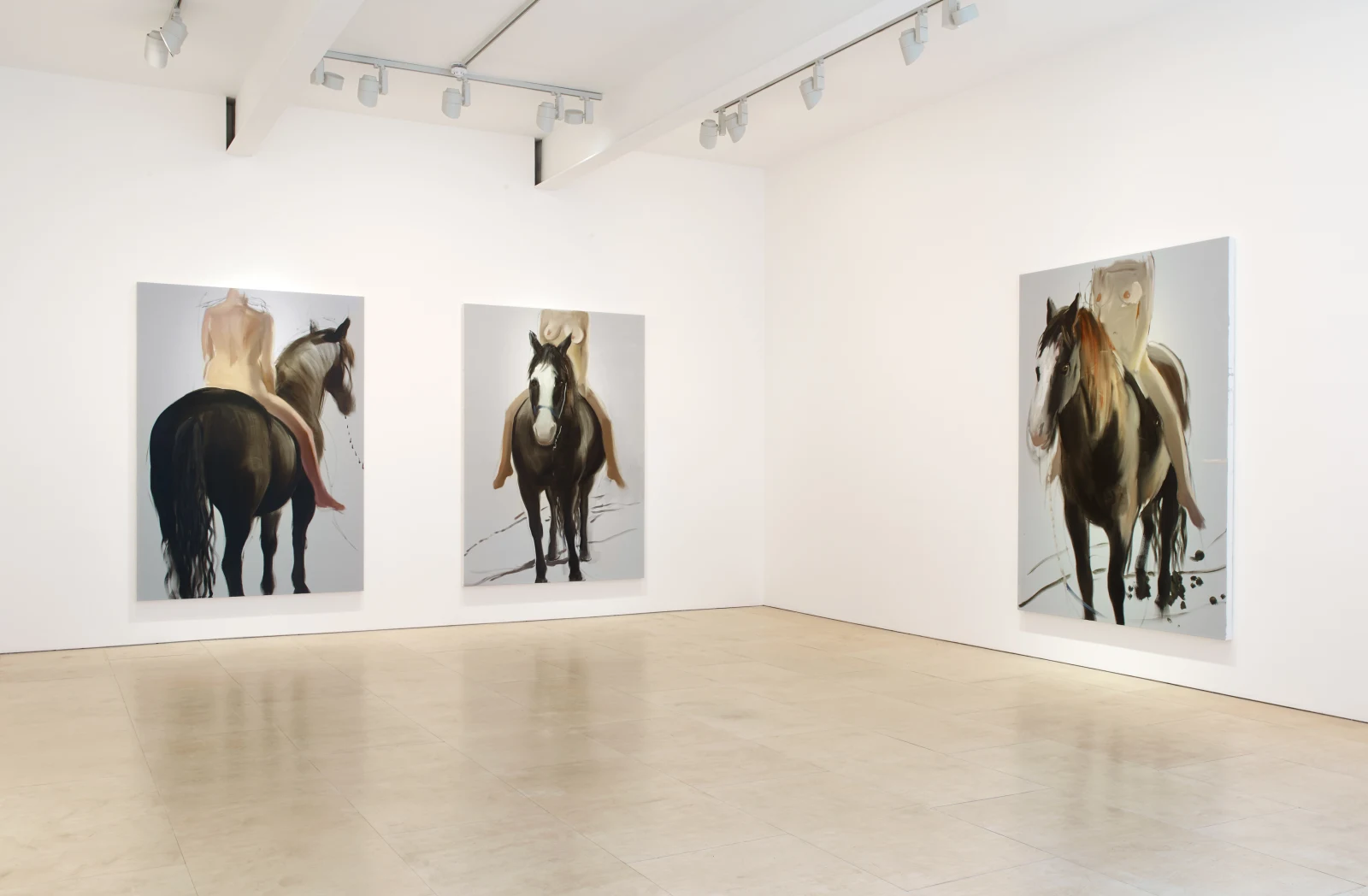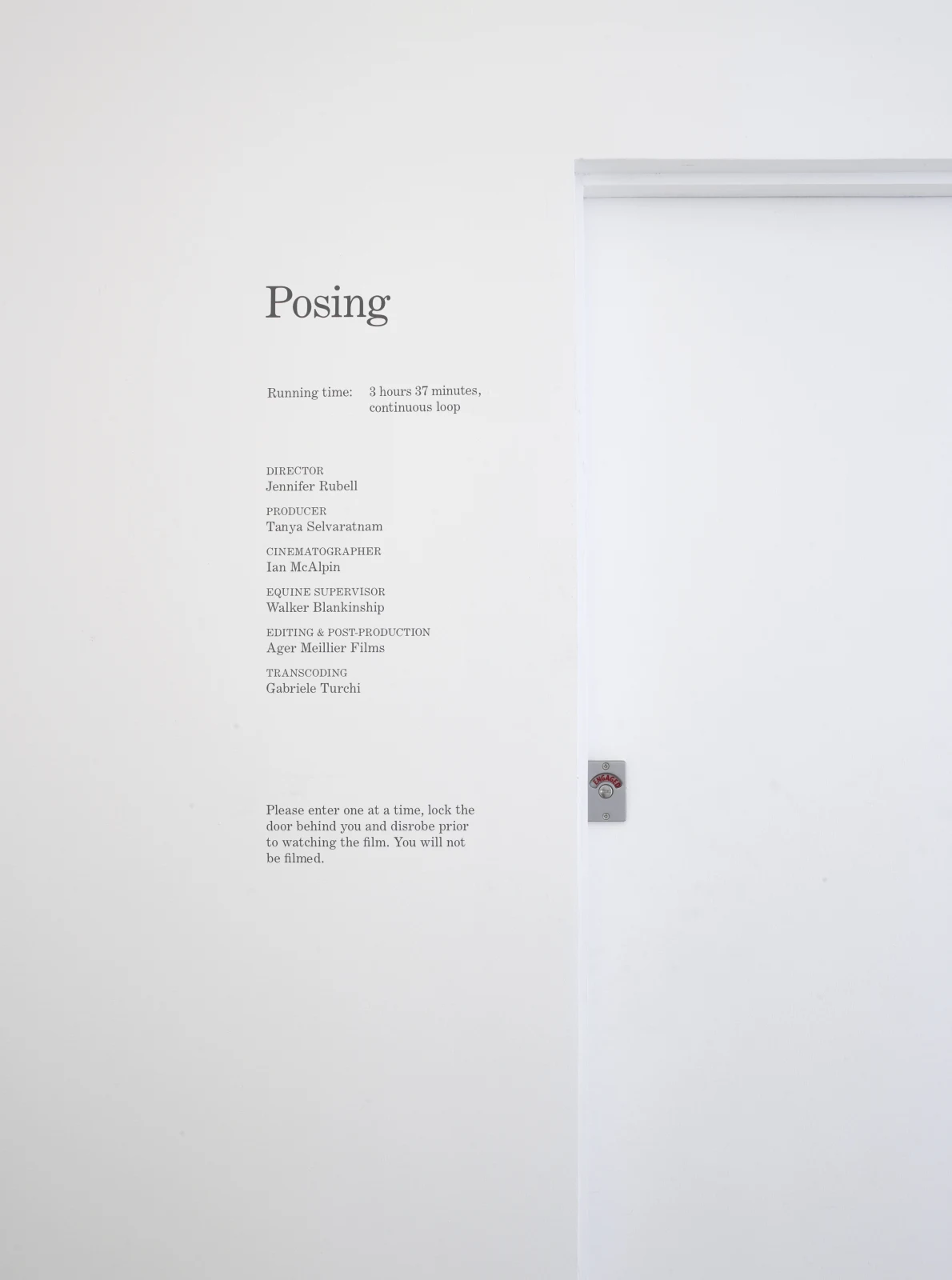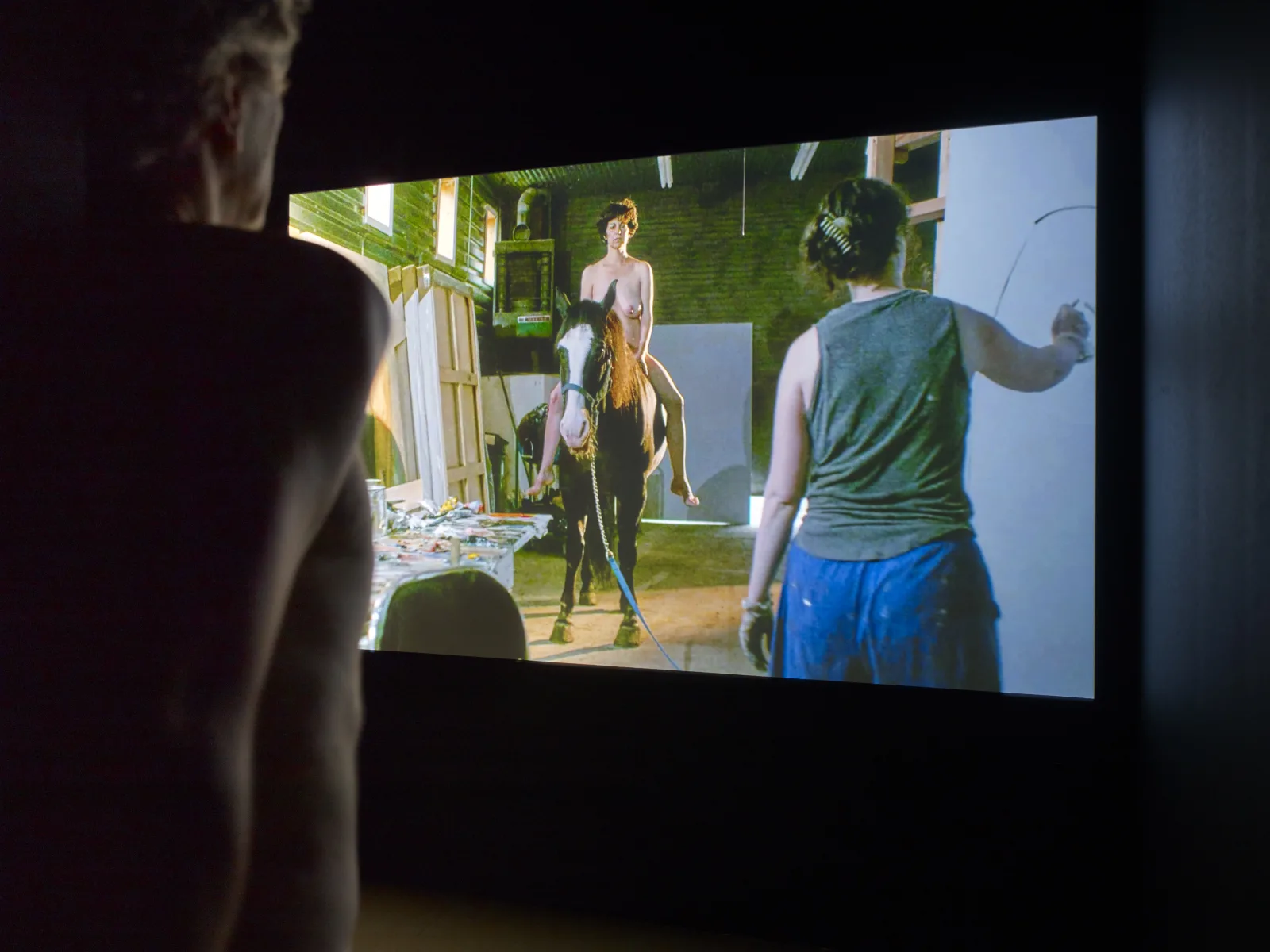
Jennifer Rubell: Not Alone
Overview
The viewer's participation in the exhibition marks both the completion of the works themselves and the satisfaction of the artist's search for a complicit, empathetic other.
Stephen Friedman Gallery is excited to launch the autumn program with 'Not Alone', an ambitious exhibition by the American artist Jennifer Rubell. Installed in the gallery’s two adjacent spaces, the show includes interactive sculpture, food performance, film and painting. Through a series of immersive and participatory works, Rubell offers viewers the possibility of physical engagement with the art object.
The audience will be invited to cosset, consume and even disrobe in front of the works they encounter. This is Rubell’s most wide-ranging and significant gallery exhibition to date and follows the artist's presentation of the monumental work, ‘Portrait of the Artist' at Frieze in 2013 and her much celebrated solo exhibition, ‘Engagement' at Stephen Friedman Gallery in 2011.
Stephen Friedman Gallery is excited to launch the autumn program with 'Not Alone', an ambitious exhibition by the American artist Jennifer Rubell. Installed in the gallery’s two adjacent spaces, the show includes interactive sculpture, food performance, film and painting. Through a series of immersive and participatory works, Rubell offers viewers the possibility of physical engagement with the art object. The audience will be invited to cosset, consume and even disrobe in front of the works they encounter. This is Rubell’s most wide-ranging and significant gallery exhibition to date and follows the artist's presentation of the monumental work, ‘Portrait of the Artist' at Frieze in 2013 and her much celebrated solo exhibition, ‘Engagement' at Stephen Friedman Gallery in 2011.
Created during the three years following the birth of Rubell's second child, the works in the exhibition are unapologetically vulnerable and demanding. Drawing strong parallels between art-making and motherhood, the art object becomes indistinguishable in its neediness from the dependent child; the viewer becomes caretaker, companion and witness.
In Gallery One, ‘Us’, a hand-blown glass sculpture of a newborn baby is passed directly from one visitor to another. The artist trusts the viewer to take personal responsibility for the sculpture, using the viewer’s physical and emotional attachment to complete the work. The sculpture is more physically legible through touch than through sight. In the following gallery space is 'Forever’, an interactive installation which invites a more sombre engagement and reflective meditation on themes of solitude and parenthood.
Punctuating the next space is an installation which connects to Rubell’s widely known food and performance practice. In ‘Them’, the audience can help themselves to hard boiled eggs and season them using salt and pepper shakers from Rubell’s personal collection. Each pairing represents a different form of companionship: a mouse and cheese; a bride and groom; a drunkard and bottle. This playful but thought-provoking work resonates in its exploration of nourishment, conception and interdependency.
In Gallery Two is a series of monumental equestrian portraits attributed to the fictional painter ‘Brad Jones’, born out of the collaboration between Rubell and American painter Brandi Twilley. For the last two and a half years, Rubell has been posing nude three times a week for Twilley in Rubell’s studio with Twilley making all of the decisions concerning the paintings. Together Rubell and Twilley address questions of authorship and subjecthood in figurative painting.
In the next gallery is the film installation, ‘Posing’. Viewers are invited into a private anteroom to undress and then stand in close proximity to the film of Rubell sitting nude on a horse for this series of ‘Brad Jones’ portraits. The viewer’s exposure mirrors Rubell’s own experience of posing, creating the possibility of the double self-portrait, with artist and viewer acting equally as subjects within the work.
The viewer's participation in the exhibition marks both the completion of the works themselves and the satisfaction of the artist's search for a complicit, empathetic other. The viewer is placed in a position of compassion, uncertainty, responsibility and self-reflection. Looking at combines with being with to yield an experience that is equally autobiographical for the artist and the viewer.
The viewer's participation in the exhibition marks both the completion of the works themselves and the satisfaction of the artist's search for a complicit, empathetic other.
Installation Views







